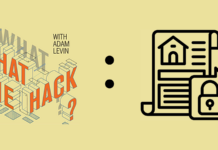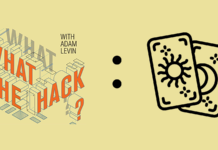
A Social Security number is like a skeleton key — able to unlock a kingdom of untold riches for identity thieves. It is the central piece of data needed to hijack our credit, steal our health insurance, use us as human shields and generally wreak havoc in our lives. And every day, two branches of the U.S. government — the executive and the legislative — put our identities and sometimes even our lives at risk because of their mismanagement of Social Security numbers.
There have been efforts in Congress to reform Social Security numbers, but unsurprisingly, gridlock has prevented that from happening. And while Congressional inaction around Social Security number reform jeopardizes our future financial well-being, federal agencies’ needless exposure of our Social Security numbers practically guarantees financial insecurity now.
Here are four ways congressional and federal foot-dragging around the issue of Social Security numbers puts our identities at risk.
1. Medicare
Anyone with a Medicare card knows that their Social Security number is printed right on the thing. And any security expert will tell you that the failure to decouple the Social Security number from the Medicare Identification Number is both dangerous and illogical. It is nothing short of ironic that the government would needlessly jeopardize the financial security of the most vulnerable segment of our population through a program that was created to protect them. While the problem should be imminently fixable, the bureaucrats who run the program seem the most recalcitrant about implementing a solution.
When Edith Byrd waved her Medicare ID card during Bill Clinton’s keynote address at the Democratic National Convention last year, there was a brief flurry of attention to the government gaffe that keeps on giving.
“Displaying such information on Medicare cards unnecessarily places millions of individuals at-risk for identity theft,” a government investigator found in 2008.
“This is particularly troubling because [Medicare] instructs individuals, many of whom are elderly, to carry their Medicare card with them when away from home.”
The folks who run Medicare argue that it costs too much to fix this problem — more than $800 million. Assuming that were true (the Government Accountability Office found the estimate bogus and called upon Medicare to stop making excuses ), in the world of cost benefit analysis, how does this one-time charge compare to the billions of dollars it costs consumers, taxpayers and the government to deal with identity theft annually?
Meanwhile, Congress dithers. The original Medicare Identity Theft Prevention Act was introduced in 2011 with 51 co-sponsors from both parties. It passed the House in 2012, but died in the Senate. This year the same House Republicans introduced the same bill (currently in Committee) and two separate bills have been introduced in the Senate that would force Medicare to make the change. Unlike the last time around, the Senate bills were introduced without Republican co-sponsors. According to GovTrack.us, the best one, introduced by Senators Dick Durbin (D-IL) and Kirsten Gillibrand (D-NY), has just a 10 percent chance of surviving past committee, and only a 2 percent chance of becoming law. In other words, the Chicago Cubs have a better shot at winning the World Series.
2. Tax Documents
Anyone who’s filed their taxes over the years might reasonably assume that our entire tax system would become dysfunctional were Social Security Numbers not displayed prominently on W-2 forms.
Well, not exactly. The fact that SSN-laden documents are delivered to millions of mailboxes and inboxes every year with little protection and “Important Tax Information Enclosed” prominently displayed on envelopes constantly exposes us to the threat of identity theft. Further, it likely contributes to the potentially $21 billion in lost revenue due to fraudulent refund requests that escape IRS filters by 2016.
Sending a W-2 complete with a name and SSN is akin to mailing a signed blank check.
President Obama’s proposed budget would allow employers to strip SSNs from the W-2 forms they provide employees and the IRS and replace them with an alternative unique identifying number for each employee.
The IRS has its own proposal, to replace the SSN with a “truncated taxpayer identification number,” which the rest of the world calls “the last four digits of your Social.”
The IRS proposal is arguably less effective, since so much information is out there already and so many algorithms exist to take partial numbers and combine them with other data about us.
The President’s plan for an entirely separate number may offer greater protection, but the reality is that unbridled partisanship puts its passage in doubt.
3. The Military
In 2008, the Defense Department ordered all branches of the military to stop using SSNs to identify soldiers and veterans. The process has been a considerable challenge and the mission is far from accomplished, partly because the practice was so ingrained in military culture. Across the U.S. and the globe, soldiers regularly used their SSNs to check out basketballs from on-base gyms, access firing ranges, fill out health forms and track their laundry.
The original deadline set by the Department to remove Social Security numbers from new and renewed Military ID cards was the end of 2009.
It missed that one by a country mile, continuing the practice until June 2011. While SSNs no longer appear on the face of the card, the Department only started removing SSN embedded barcodes that are printed on the back of ID cards in 2012, and is not yet done.
I’m at a loss. If during the Battle of the Bulge, Patton’s 3rd Army could fight a battle, pivot and march a hundred miles, fight another battle (in the middle of a blizzard) and win both in just two short weeks, then removing bar codes from ID cards should be a walk in the park.
As long as SSNs are present in any form, on any ID card, or are used for any military purpose, service members and their families are exposed to the dangers of identity theft, which is one more danger than they should have to worry about.
4. Child Identity Theft
A child’s SSN is worth more to a thief than an adult’s because it can take years (perhaps even a decade) for the crime to be discovered. The lag time between crime and detection allows untold stealth damage to occur, often saddling young adults with years of trashed credit or worse. One study found that 10.2 percent of all children surveyed had loans, utility bills and real estate associated with their SSNs.
A partial (albeit reactive) remedy is to make it easier for children to get new SSNs if their originals were compromised by identity thieves. The Social Security Administration is considering the change, and it’s about time. The agency’s vision is far too narrow, however. It proposes allowing Social Security number changes by children ages 13 and under. As the Federal Trade Commission pointed out, identity theft affects children ages 14 to 17 too, “and the repercussions are just as severe as when it occurs to a younger child.”
In light of our heightened interest in the Constitution and the Bill of Rights, when it comes to protecting Americans from damage caused by government-mandated overuse of our Social Security numbers, perhaps our friends in Washington should take a closer look at the Preamble, which states that a properly functioning government should, “insure domestic Tranquility, provide for the common defence, promote the general Welfare….”
While some agencies are moving in the right direction with regard to the reforms of Social Security numbers, they need to move much faster. And as for the rest, one could argue that they’re failing to respect the will of our Founding Fathers. If that argument doesn’t get the current crop of politicians and bureaucrats moving, I imagine they will be sufficiently motivated once they discover they (or their family members, friends or big contributors) have become victims of identity theft. Given the current state of affairs, it is inevitable.
Originally posted in the Huffington Post.









